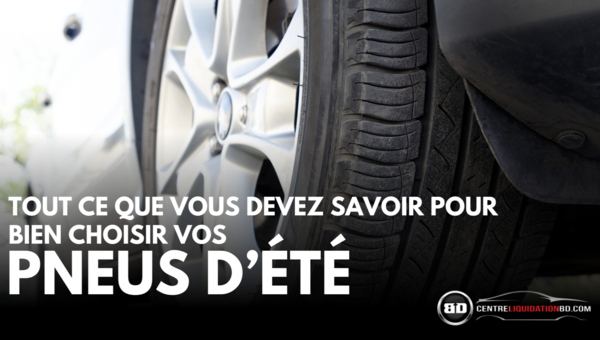Top 10 Essential Tips for Your Winter Tires!
October 24 2024, Agence Trafic Média

Granby, Quebec - It is recommended to install your winter tires when the outside temperature drops below 7°C. At this temperature, all-season tires begin to harden and lose their effectiveness, while winter tires maintain their flexibility and grip. Additionally, remember that the deadline to install your winter tires in Quebec is December 1st. This year again, there seem to be availability issues in certain sizes, so act quickly to avoid stock shortages.
Winter in Quebec can be harsh, and it is essential to properly prepare your vehicle to face icy and snowy roads. Here are the 10 best practices for choosing and maintaining your winter tires to ensure your safety and that of your passengers.
1. Opt for Certified Tires
Look for the snowflake symbol inside a three-peak mountain on the tire sidewall. This symbol guarantees that the tire has been tested and certified for severe winter conditions.
2. Choose the Right Type of Tire
- Studded Tires: Ideal for extreme ice conditions, but their use is regulated in some regions.
- Non-Studded Tires: Offer good performance on snow and ice without the restrictions of studded tires.
- Friction Tires: Designed for deep snow conditions, they offer excellent traction without the drawbacks of studs.
3. Ensure the Correct Size
Check that the tire size matches your vehicle’s specifications. Improperly fitted tires can affect handling and safety.
4. Use Four Identical Tires
For optimal performance, especially on all-wheel-drive (AWD) vehicles, use four identical winter tires in terms of brand, model, and wear.
5. Monitor Tire Pressure
Maintain tire pressure at an optimal level. Under-inflated or over-inflated tires can compromise traction and handling, especially on slippery roads.
6. Rotate Tires Regularly
Tires should be rotated regularly to ensure even wear. This extends the life of the tires and maintains optimal performance.
7. Check Tread Depth
The tread depth should be at least 4 mm to ensure good grip. Replace tires when the tread is worn.
8. Balancing and Alignment
After installing your winter tires, ensure that your wheels are properly balanced and aligned. This guarantees even tire wear and improves vehicle handling.
9. Off-Season Tire Storage
When changing your tires for the summer season, store your winter tires in a cool, dry place away from direct sunlight. Use protective covers to prevent dust and dirt accumulation.
10. Replace Tires Regularly
Winter tires should be replaced every 3 to 4 years, even if they still appear to be in good condition. Rubber ages and loses its effectiveness over time.
Choosing Tires for Electric Vehicles (EV)
Electric vehicles (EVs) have specific tire needs due to their weight and high torque. Here are some tips for choosing the right tires for your EV:
- Low Rolling Resistance: Tires with low rolling resistance help reduce energy consumption and increase your EV’s range.
- Higher Load Index: Electric vehicles are heavier than conventional vehicles. Tires designed for EVs have a load index capable of supporting more weight.
- Quiet Ride: Electric vehicles are naturally very quiet. EV tires offer excellent noise reduction for an even more pleasant ride.
- Adapted Tread Pattern: EV-specific tires often provide enhanced performance during acceleration thanks to a tread pattern tailored to the unique needs of these vehicles.
Conclusion
By following these best practices, you can ensure safe and efficient driving during the winter months. At Centre de Liquidation BD, we are here to help you choose the best winter tires for your vehicle and provide expert advice on their maintenance. Feel free to visit us to discover our wide range of used vehicles and get personalized advice.
For more information, contact us or visit our website Centre de Liquidation BD.

